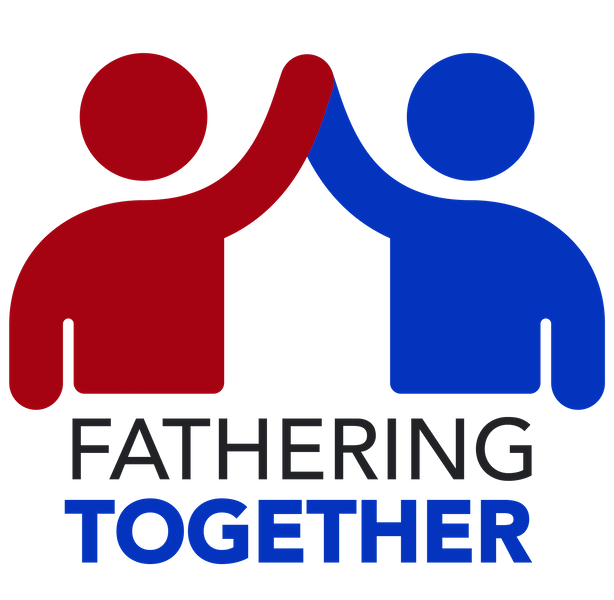Is there a right or wrong way to play with your kids? Well, a few dads in our group were treated to an unusual parenting workshop to discuss this topic. Kate Delacorte and Meredith Gary, the Directors of The Downtown Little School, warmly welcomed the NYC Dads Group for a workshop about how children learn through play. The workshop included a quick overview of early childhood development (birth-5 years), and a discussion of what “play” looks like at different ages. They went into detail on how best to support your child’s play at different stages, and about the ways in which play supports learning throughout early childhood. One dad said, it was “a fantastic free form discussion about parenting, play, and child development. The women who lead the discussion were amazing and it was great to have a safe / engrossing environment to watch the kids interact.” while the parents had a meaningful discussion.
For me, the key to any parenting workshop, is to walk away feeling better as a parent and be equipped with a few more tools to get there. The practitioners, who run a wonderful pre-school, offered sound advice and “debunked a few myths.” Gotta love this statement – “it will never cease to amaze me how most young children are more fascinated with what the present is wrapped in, than the present itself.” So true! One goal of this blog is to turnkey some valuable information, and share it with other parents.
With the permission of Delacorte and Gary, of The Downtown Little School, here is the introduction document that they distributed from the supporting play workshop:
It is clear to all who have ever met or spent time with a baby that they have a lot to learn. A newborn can’t even hold up her head. She relies entirely on her parents to meet all her needs. But even after a few short days of life, an attuned parent can sense change and development. The infant learns to hold up her head. Her eyes begin to focus on objects, on faces. Babies respond to sounds. And babies at a very young age begin to communicate. That early communication holds the key to healthy, typical development.
The adult caregiver responds to the infant’s communication. Much of the baby’s early experience of learning is a reciprocal affair, an exchange between caregiver and child that soon can grow into the first stages of play.
There are many products available to parents that claim to enhance intelligence and development, products designed to amuse children or teach them all they need to know but children really need only two things (aside from the obvious basics like love and food) to learn and grow; they need relationships with attentive adults and they need concrete experience. The attentive adult provides the safe environment for exploration. The adult responds to the child’s pleasure in his discoveries, expands the child’s understanding of those discoveries and supports the child’s growing sense of mastery of his world. There is a constant back and forth between child and adult, reciprocity, as the child learns about cause and effect, and begins to sense the impact that he has on his world.
Our goal today is not to give you a list of activities to do with your child or toys to buy for her. You know your child best, and you already know the kinds of things that bring her enjoyment and that you enjoy doing together. We also want to support you in rejecting the current hype to buy the toys or sign up for the classes that will help your child get ahead.
Instead, we want to talk a bit about some of the milestones of child development and about how an understanding of development will help you assess for yourself what activities and materials will best support your child at different stages.
Here is some additional information provided by these practitioners about play- these are based on approximate milestones (milestone ranges are so gray so use this more as a guideline than a rule) of how children interact with four different “open-ended toy” objects – a spoon, a shoe, crayon & paper, and wooden blocks:
Young Infant (3-7 months)
What is happening? Differentiation (between self and caregiver)
Spoon: Holding, grasping, mouthing
Shoe: Holding, grasping, mouthing
Crayon & Paper: n/a
Wooden Blocks: Holding, grasping, mouthing
Older Infant (8 – 18 months)
What is happening? Cause and effect, body awareness, reciprocal play
Spoon: Dropping, banging, reaching, picking up
Shoe: Reaching , picking up
Crayon & Paper: Holding, crumpling, marking
Wooden Blocks: Dropping, banging
Toddler (18-24 months)
What is happening? Separation, mastery, gross motor coordination, early symbolizing, emerging language
Spoon: Feeding self, feeding other
shoe: Putting on and off
Crayon & Paper: Scribbling, choosing colors
Wooden blocks: Stacking, knocking, lining up
Child (2-4 years)
What is happening? Independence, cooperative play, fine motor coordination, symbolizing, representing experience, sophisticated language
Spoon: Pretending
Shoe: Dress-up, pretending
Crayon & Paper: Drawing, pretend writing, writing
Wooden Blocks: Constructing, pretending
It was most interesting to learn that most forms of play deal with the simplest of objects (pots & pans or shoes or a mirror), not the sophisticated contraptions with bells and whistles or electronics! As my friend Matt had expressed, there is a heartfelt article by Joe Schatz (of the Joeprah blog) that ties-in well with some of the things we learned. Check out Dads Teaching While They Play. So let’s not take life so seriously & play more with our children…

Leave a Reply